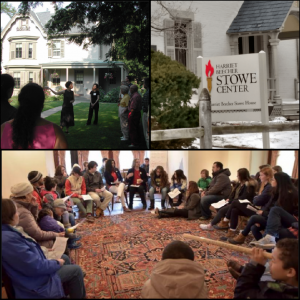To reiterate, our Liberal Arts Action Lab team in partnership with HartBeat Ensemble researched creative placemaking strategies for the Nook Farm area, in the Asylum Hill neighborhood of Hartford, Connecticut. The goal of our research was to determine strategies for the promotion of neighborhood stability and social cohesion for current residents of the neighborhood using creative placemaking. Along with developing strategies that would avoid gentrification in this process. We conducted face-to-face interviews with nearly 50 residents in proximity to HartBeat’s location on Farmington Avenue to better understand current residents’ experiences and aspirations for creative placemaking in their neighborhood.
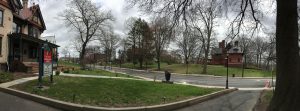
Themes:
-
Both younger and older adults were much more positive in their opinions about the neighborhood than middle-aged adults.
-
Neighborhood residents’ level of familiarity for neighborhood organizations was highest for Mark Twain , second for HBS , and third for HartBeat.
-
Time of residency did not impact knowledge nor visitation status of these organizations, although most residents followed this trend, the mid-group (5-9 years) did not.
-
Data on the level of familiarity for all three neighborhood organizations presented interesting variations based upon educational level.
- Overall participants had the strongest response to the photo group of creative community events we labeled parades and the weakest response to the photo group we labeled gardening, with racial differences noticeable in the interest levels of gardening.
Both younger and older adults were much more positive in their opinions about the neighborhood than middle-aged adults.
Our study found interesting patterns on perceptions of the neighborhood by participant age groups. Younger adults (18-34 years) and older adults (65+ years) were much more likely to express positive feelings about the neighborhood than middle-aged adults (35-64 years). Out of twelve residents who spoke about their sense of community overall, 67% of 18-24 year-olds said that they felt positively about the community and/or that they felt it was a connected community. However, only about half of residents 35-64 said that they felt positive about the community, while the other half said that the community felt disconnected and needed improvement. Finally, of those residents 65 and older, four out of the five felt positively about the community. There is no clear reason why this is; one conjecture could be that there are more community events geared towards young adults and the elderly, while there aren’t as many events geared towards those of middle age.
Neighborhood residents’ level of familiarity for neighborhood organizations was highest for Mark Twain , second for HBS , and third for HartBeat.
| Organization | Familiarity | % | Visited | % |
| Mark Twain | 39 | 79% | 23 | 47% |
| Harriet Beecher Stowe | 27 | 55% | 16 | 33% |
| HartBeat Ensemble | 24 | 49% | 2 | 4% |
Time of residency did not impact knowledge nor visitation status of these organizations, although most residents followed this trend, the short-term group (0-4 years) did not.
Out of all organizations, most participants were aware of and stated that they have visited the Mark Twain House regardless of how long they lived in the area. 66% of those in the short-term group (12) participants were both familiar with and previously visited the Mark Twain, as opposed to the 42% of (5) participants in the short-term group that were familiar with HartBeat Ensemble, yet 0% had previously visited.
Short-term (0-4 years)
| Familiar (n = 12) | % | Visited | % | |
| Mark Twain | 8 | 66% | 8 | 66% |
| Harriet Beecher Stowe | 4 | 33% | 1 | 25% |
| HartBeat Ensemble | 5 | 42% | 0 | 0% |
Interestingly, there is a higher percentage of individuals from the short-term group that were familiar with HartBeat (42%) versus the Stowe Center (33%).
Mid-term (5-9 years)
| Familiar (n = 10) | % | Visited | % | |
| Mark Twain | 7 | 70% | 7 | 70% |
| Harriet Beecher Stowe | 5 | 50% | 4 | 40% |
| HartBeat Ensemble | 5 | 50% | 1 | 10% |
The same amount of individuals (50%) were familiar with the Harriet Beecher Stowe center and HartBeat Ensemble. It may be that this group of residents were equally familiar with both organizations because this group of residents have lived in Asylum Hill for some time.
Long-term (10+) years
| Familiar (n = 23) | % | Visited | % | |
| Mark Twain | 20 | 87% | 20 | 87% |
| Harriet Beecher Stowe | 17 | 74% | 11 | 48% |
| HartBeat Ensemble | 14 | 61% | 1 | 4% |
This group is the only group where more residents were familiar with the Harriet Beecher Stowe house (74%) than the HartBeat Ensemble (61%). Moreover, the difference in these numbers is only 13%, and while it may not seem like much of a gap, it is the largest gap among each group of residency.
Data on the level of familiarity for all three neighborhood organizations presented interesting variations based upon educational level.
We arranged the data gathered from the interviews regarding educational achievements into two groups; residents that possessed an educational achievement of high school diploma or less were grouped into the category of lower education, while residents with some college or more educational experience were grouped into the higher-educated residents group.
- People with lower level education were most familiar with Mark Twain (76%), then HartBeat came in second(51%), while the Harriet Beecher Stowe House came in third(48%).
- Within the category of higher-educated residents, Mark Twain came in first with the highest level of familiarity(85%), followed by Harriet Beecher Stowe(65%) then HartBeat(45%).
People with lower education were more familiar with HartBeat than people with higher education. This pattern may be attributed to the purpose and function of HartBeat as a theater. HartBeat serves as a small local theater that attempts to connect the community beyond any traditional barriers and serves to promote the community. Due to its size, location, purpose and audience, it might not be able to gain as much attention from higher educated people.
Therefore, contrary to expectations residents with lower educational levels were more familiar with HartBeat than to residents with higher educational levels.
It is also important to understand that the Mark Twain house and the Harriet Beecher Stowe Center serve as historical homes and museums that attracts different forms of attention and audience members. These two forms of historical homes are generally studied in higher education as an influential part of history between the 19th and 20th century. This explains why people with higher educational levels are more familiar with Mark Twain and Harriet Beecher Stowe than people with lower educational levels.
Overall participants had the strongest response to the photo group of creative community events we labeled parades and the weakest response to the photo group we labeled gardening, with racial differences noticeable in the interest levels of gardening.
| Photo groups: | Strongest Response: | Weakest Response: |
| Music | 39% | 6.5% |
| Gardening | 8% | 35% |
| Parades | 41% | 6.5% |
| Physical | 10% | 4% |
| Food | 0% | 15% |
| Art | 2% | 33% |
When looking for racial patterns it is noticed that nearly 30% more black residents had the weakest response to Gardening than white residents. Furthermore, the few people who had the strongest response to Gardening were all white.
Methodology
Since “creative placemaking” is not a familiar topic for most people, we worked with HartBeat to design an interview guide that used everyday terms to gather the most relevant information from neighborhood residents. For example, we asked participants to tell us “about a time you had fun connecting with other people in your community.” Also, we showed them a binder of pictures of “creative community events” from the Hartford area, compiled into six categories (Music, Gardening, Parades, Physical, Food, and Art), to see which provoked the strongest and weakest responses. Also, we showed them pictures of neighborhood organizations (HartBeat, Mark Twain House, and Harriet Beecher Stowe Center), and asked if they were familiar with or had ever attended an event there. In conclusion, we asked 6 demographic questions (race/ethnicity, gender, age group, length of residency, homeowner or renter status, and highest level of education), in order to compare our sample with the Census tract data. See the full interview guide at the bottom of this page.
During the first week of March 2018, we conducted 49 on-the-street interviews with participating adults who resided around HartBeat Ensemble (360 Farmington Ave, Hartford). We focused on sample on Census Tract 5031, roughly defined as the area inside Asylum Ave, Sigourney Street, I-84, and Forest Street, to compare our sample with the general demographics from the American Community Survey 2016 5-year estimates.

Before analyzing our results, it is important to determine whether or not our interview sample is demographically reflective of the neighborhood as a whole. Overall, our sample of 49 interview participants over-represented Black middle-aged male renters with lower education levels. Specifically, Black residents comprised 61 percent of our sample, compared to 41 percent of the census tract. As a result, we undersampled Hispanic residents (8 percent in our sample versus 25 percent in the census tract) and White residents (20 percent in our sample versus 31 percent in the census tract). Middle-age adults between the ages of 35 to 64 were over-represented in our sample (64 percent, compared to 34 percent for the census tract). Our study also underrepresented people with some college education (41 percent, compared to 60 percent for the census tract). Furthermore, we slightly oversampled men (61 percent, compared to 52 percent in the census tract) and those who rented homes (94 percent, compared to 81 percent in the census tract). Although our sample is not perfectly representative of the census tract demographics, its emphasis on Black renters with lower education levels raises the voices of many marginalized people who typically are not heard in creative placemaking discussions.
| Census category | Census tract 5031 | Interview sample (n = 49) |
| Black or African American | 41% | 61% |
| White | 31% | 20% |
| Hispanic | 25% | 8% |
| Other | 2% | 10% |
| Asian | 1% | 1% |
Our interviewing process met ethical research standards for informed consent and confidentiality, and our application was approved by the Trinity College Institutional Review Board application. Each adult gave verbal consent to be audio-recorded, and as an incentive for for the time they spent answering our questions, we gave $5 to each participant who completed the interview. We transcribed each interview and masked individually-identifying details, to maintain the anonymity of the participants. At the conclusion of this project, all audio files will be permanently deleted from all devices and only masked transcriptions will remain for the Action Lab archives. From those transcriptions each interview was coded on a spreadsheet with categories from demographics, to familiarity with organizations, to participants’ sense of community. The coded interviews enabled us to search for themes and notice patterns.
Creative Placemaking Neighborhood Interview Guide: Interview ID ____________
Hi, my name is _____ from _____. We are interviewing adults who live in this area to learn more about your experiences in the community, and will give $5 if you complete the interview. It takes no more than 5-10 minutes, and entire process is voluntary, and you can stop us at any time. May we have your permission to record your interview? We will NOT use your name or any identifying details in our report.
1) Before we begin, what street do you live on? LISTEN and circle:
Farmington Woodland Niles Gillett Asylum Marshall St
Forest South Marshall Case Laurel Imlay Sigourney Hawthorn
[Check map. If not in area, politely end and explain our focus on residents of this specific area]
2) What do you call this community where we are now?
3) When you have extra time, how do you have fun with friends or family? Where do you go?
[For each response, clarify place, people, activity]
4) Tell me about a time you had fun connecting with other people in your community.
[For each response, clarify place, people, activity]
5) I’m going to show you some pictures of creative community events. Tell me if any remind you of a similar time when you had fun.
[For each response, clarify: What made it fun? People, place, activity?
6) Which of these events would make you feel more connected with people in your community?
7) Now I’m going to show you pictures of some organizations in the neighborhood.
[For each one] Are you familiar with this organization? Have you ever been there?
Do they help build connections between people in your community?
8) My final questions are quick ones about you:
- a) How do you identify your race or ethnicity? LISTEN and circle: White Black Hispanic Asian Other
- b) How do you define your gender? LISTEN and circle: Male Female Other
- c) What is your age group? ASK and circle: 18-34 35-64 over 65 years?
- d) How long have you lived in this area? LISTEN and write _______years _______months
- e) Do you own or rent your home? CIRCLE own rent
- f) What is the highest level of education you have completed? LISTEN and circle:
Some high school High school Some college Bachelor degree More than Bachelor
Thank you for completing the interview and here is the $5
CIRCLE street where you conducted interview:
Farmington Woodland Niles Gillett Asylum Marshall St
Forest South Marshall Case Laurel Imlay Sigourney Hawthorn
Photos of creative community events (for question #5)
Music:

Gardening:
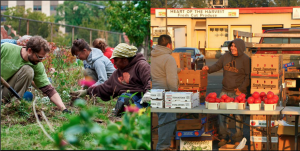
Parades:
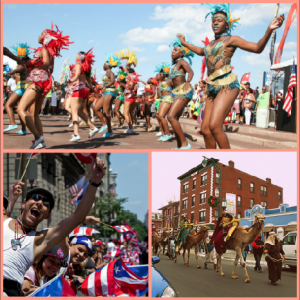
Physical:
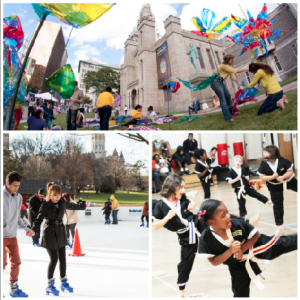
Food:
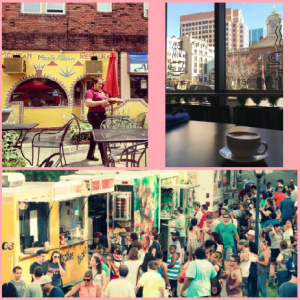
Art:
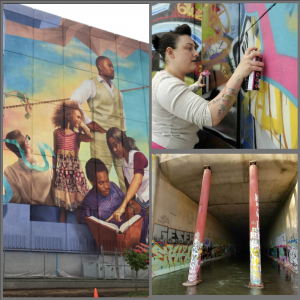
Photos of organizations in the neighborhood (for question #7)
Hartbeat Ensamble:
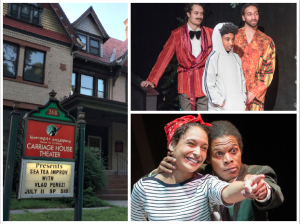
Mark Twain House:

Harriet Beecher Stowe Center:
